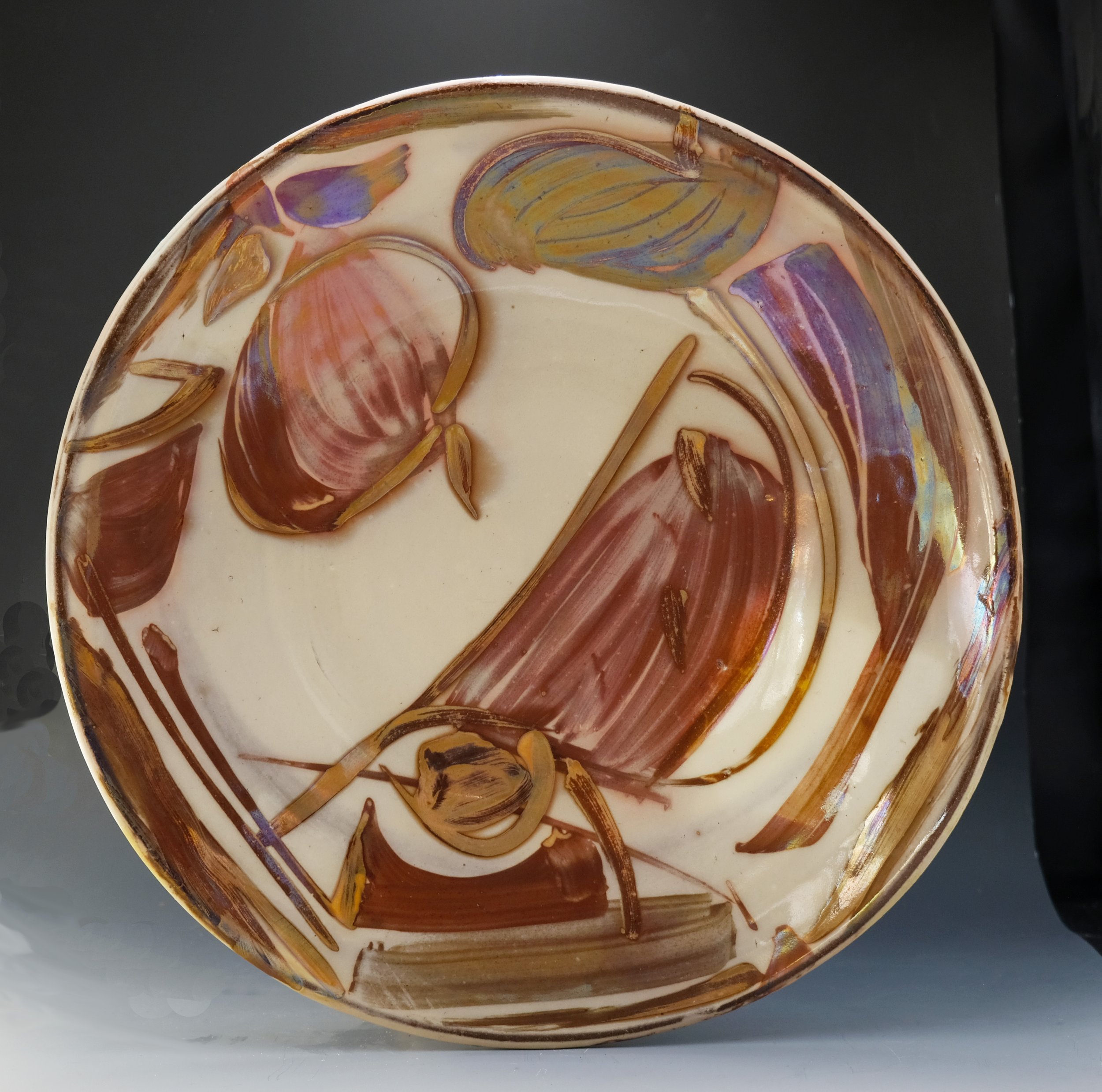REDUCED PIGMENT LUSTRE
Reduced pigment lustre technique was invented by Islamic potters in the 9th and 10th centuries. It was perfected by potters working in many countries around the Mediterranean for over six hundred years. This ancient technique was revived in the 20th Century by Alan Caiger-Smith in England, and later brought to Australia by the late Alan Peascod. Today, I am one of only a few ceramic artists in Australia working with this technique.
Reduced pigment lustre technique depends on heavy reduction at around 640°C to convert silver and copper compounds contained in the pigment into tiny grains of silver. This produces the silvery, golden tones typical of reduced lustre. The pigment is applied to the already glazed surface of the pot in brushstrokes. At around 640°C (just when the glaze is beginning to soften) the kiln is starved of oxygen which causes the metallic compounds to break down and become deposited as a thin metallic film on the surface of the pot.
All variations in the finished pieces are produced by subtle variations in the firings. This is what gives reduced lustre work its charm and makes each piece entirely unique.
Platter 35cm X 35cm












